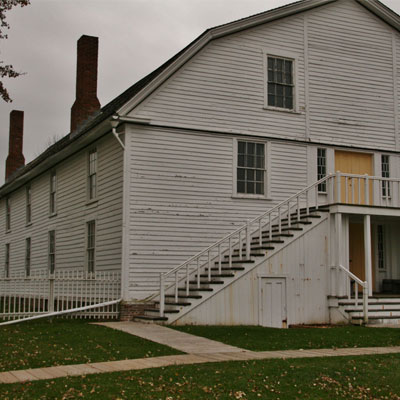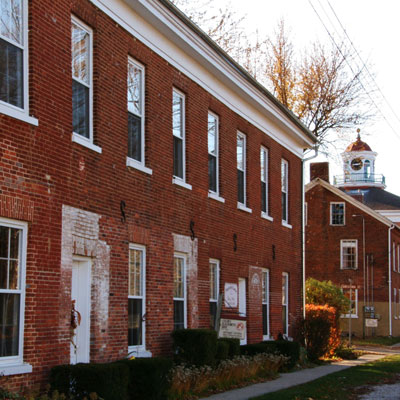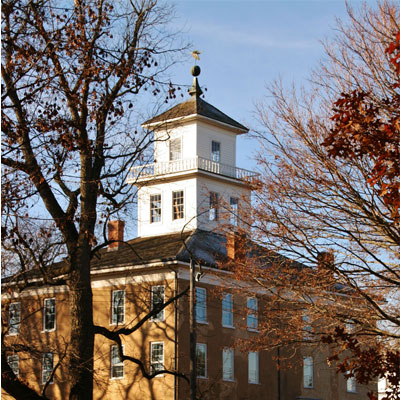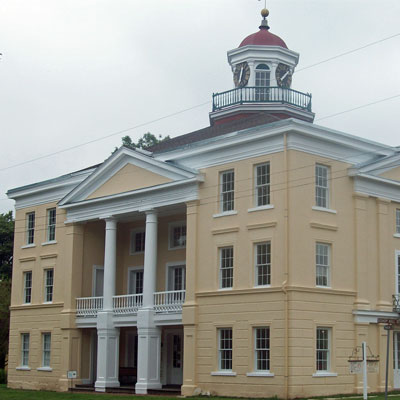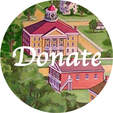Historic Bishop Hill
Bishop Hill Today
Many other 'historic villages' one might visit are actually reproductions. They may have done some archeology and built new, or moved a mish-mash of historic structures to an artificial commons. But Bishop Hill is very much the same town you would have seen if you came through in a horse and buggy 177 years ago. It is a living, fully functional village with a mayor and fire department. The people who live here still farm the surrounding country side, cut firewood for the winter, plant broom corn in the spring, and celebrate the changing of the seasons, just as our Swedish ancestors did. Yes, we do this for the folks who come to participate, but more importantly, we do it because it is our way of living authentically. The crafts and trades that supported our fore-fathers and mothers are still a source of livelihood today. The pottery and brooms you buy are the same ones we use in our kitchens.
Bishop Hill : Steeped in History
Like the Pilgrims at Plymouth Rock and the Quakers who followed William Penn to Pennsylvania, the Jansonists were a group of Protestants who fled oppression seeking religious freedom on the shores of America. Eric Janson was known as the Wheat Flour Messiah. He had a debilitating illness cured by a miracle that reshaped the rest of his life. He began preaching about our personal relationship with the Lord, not one filtered by the state religion. After being jailed for his beliefs, he fled Sweden with more than 1000 followers. These people sold everything they owned, some families were divided and they took the arduous journey across the North Atlantic to America in 1846.
They sent a scout ahead to purchase property in what was then the western wilderness of Illinois. The first winter they lived in dugouts along the creek. Cholera claimed the lives of many. They soon built a church for worship, large dormitories for housing, a bakery and a brewery to feed their growing numbers. They build industry: brooms, buggies and woven rugs for income. They built a community that shared the wealth harvesting the bounty of the land. They built a hospital, a school and administrative offices. More than a town, they built what became a successful economic enterprise that valued the labor of women and men, and educated their children.
The preaching and philosophy of Eric Janson is too complex for these few paragraphs, except to say that his convictions inspired many and caused consternation among more than a few. He was murdered in the Henry County Courthouse over a quarrel with his cousin's husband. The community was then managed for a number of years by a board of trustees. The community was eventually dissolved and the holdings were divided among the members with women and children also receiving shares of property, unusual in the 1860's.
Bishop Hill became a hub for thousands of Swedish immigrants who eventually settled much of the Midwest, from Galva to Galesburg, Minnesota to North Dakota.
At the turn of the 20th century, many of the Colony buildings were falling into disrepair. The Old Settlers, The Bishop Hill Heritage Association and the State of Illinois stepped up to save the buildings still standing. Throughout the 1970s restoration and preservation became the call to arms. With help from the Swedish Royal family, descendants of the hardy pioneers and thousands of hours of volunteer labor, Bishop Hill became a thriving community once more.
With tens of thousands of visitors every year, visitors from all 50 states, Sweden and other Scandinavian countries, Bishop Hill has a well earned reputation as a place to step out of the hustle and bustle and back to a simpler time. Truly a Utopia on the Prairie, it is the kind of place where it is easy to expect enchantment!
They sent a scout ahead to purchase property in what was then the western wilderness of Illinois. The first winter they lived in dugouts along the creek. Cholera claimed the lives of many. They soon built a church for worship, large dormitories for housing, a bakery and a brewery to feed their growing numbers. They build industry: brooms, buggies and woven rugs for income. They built a community that shared the wealth harvesting the bounty of the land. They built a hospital, a school and administrative offices. More than a town, they built what became a successful economic enterprise that valued the labor of women and men, and educated their children.
The preaching and philosophy of Eric Janson is too complex for these few paragraphs, except to say that his convictions inspired many and caused consternation among more than a few. He was murdered in the Henry County Courthouse over a quarrel with his cousin's husband. The community was then managed for a number of years by a board of trustees. The community was eventually dissolved and the holdings were divided among the members with women and children also receiving shares of property, unusual in the 1860's.
Bishop Hill became a hub for thousands of Swedish immigrants who eventually settled much of the Midwest, from Galva to Galesburg, Minnesota to North Dakota.
At the turn of the 20th century, many of the Colony buildings were falling into disrepair. The Old Settlers, The Bishop Hill Heritage Association and the State of Illinois stepped up to save the buildings still standing. Throughout the 1970s restoration and preservation became the call to arms. With help from the Swedish Royal family, descendants of the hardy pioneers and thousands of hours of volunteer labor, Bishop Hill became a thriving community once more.
With tens of thousands of visitors every year, visitors from all 50 states, Sweden and other Scandinavian countries, Bishop Hill has a well earned reputation as a place to step out of the hustle and bustle and back to a simpler time. Truly a Utopia on the Prairie, it is the kind of place where it is easy to expect enchantment!

